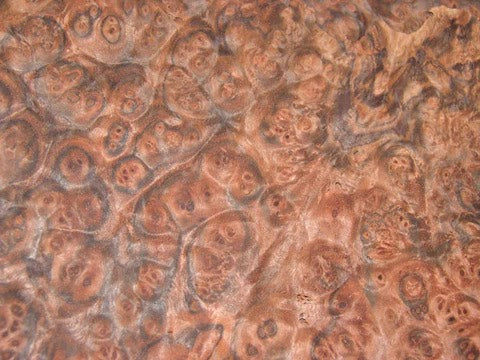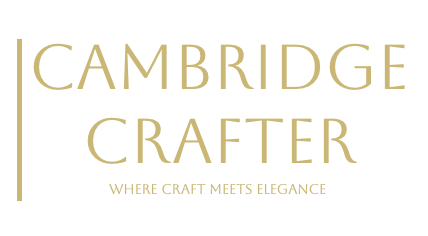
Eucalyptus Burl
Eucalyptus Burl comes from various species within the Eucalyptus genus, which includes over 700 species native to Australia, with some also found in New Guinea, Indonesia, and the Philippines. Common burl sources include species like Eucalyptus camaldulensis (River Red Gum), Eucalyptus marginata (Jarrah), or Eucalyptus diversicolor (Karri), often growing in diverse climates from coastal regions to arid inland areas. These trees can reach 30–150 feet tall with trunk diameters of 3–6 feet, and burls typically form on the trunk, branches, or underground as root burls, known as lignotubers.
The heartwood of Eucalyptus Burl varies by species but often displays rich, warm tones ranging from reddish-brown to deep burgundy, with some species like Jarrah showing darker purple-brown hues or River Red Gum featuring crimson and golden streaks. The sapwood is usually pale cream or white, distinctly separate. The grain is highly irregular due to the burl formation, showcasing tight swirls, curls, and clusters of burl eyes, often with dramatic figuring like quilted or mottled patterns. The texture is typically fine to medium, with a high natural lustre that enhances its visual depth when polished.
Eucalyptus Burl has a density ranging from 700–1,100 kg/m³, depending on the species, making it a hard and heavy wood with excellent strength and durability. It’s naturally resistant to decay and insects, thanks to its high oil and resin content, which also makes it challenging to glue—surface preparation with a solvent like alcohol is recommended. The interlocked grain and hardness can cause tearout and tool blunting, requiring sharp, carbide-tipped tools for clean cuts. It finishes beautifully, with oil-based finishes bringing out its rich colours and figuring, often used without staining to preserve its natural beauty.
When worked, Eucalyptus Burl has a distinctive eucalyptus scent—sharp, medicinal, and slightly sweet—due to its volatile oils, which can be pungent when green but fade after drying. In the UK, it’s prized for high-end applications like decorative veneer, luxury furniture, turned objects (e.g., bowls, pens), and knife handles, where its unique patterns can be showcased. Its acoustic properties also make it a choice for musical instrument components, offering a bright, resonant tone.
Eucalyptus Burl is moderately expensive, with prices varying by species and figuring. While many eucalyptus species are sustainably managed in Australia, some, like Eucalyptus diversicolor, face habitat pressures, though none are currently listed on CITES Appendices. The IUCN lists certain species as near-threatened due to land clearing, so responsible sourcing is key. Its combination of durability, striking appearance, and cultural significance—often tied to Indigenous Australian uses like tool-making—makes Eucalyptus Burl a premium choice for bespoke woodworking projects.
